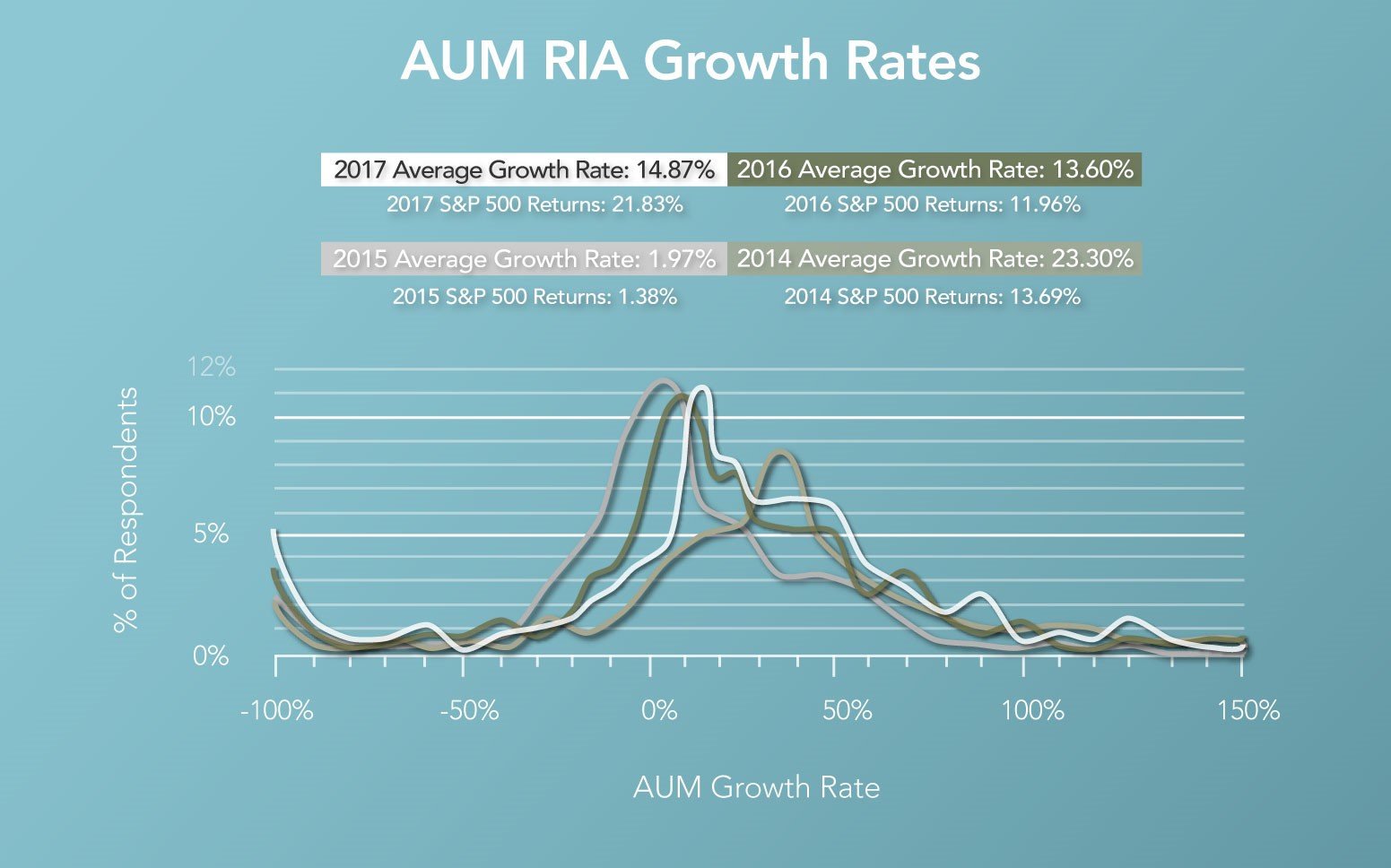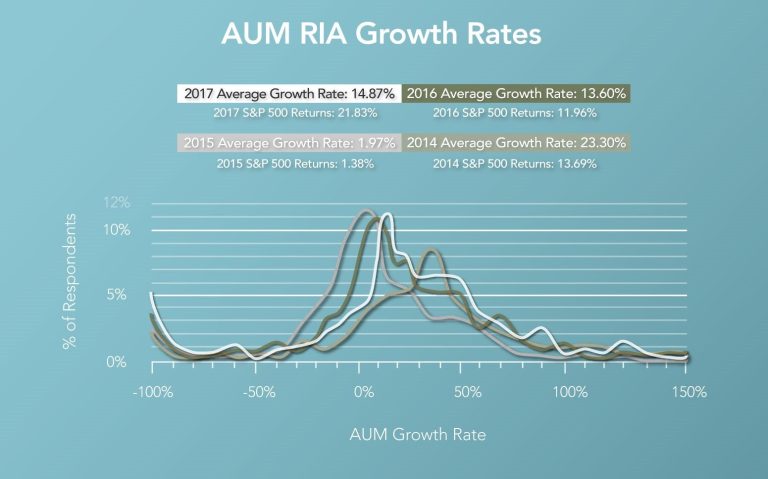The findings in this blog post come from our annual survey of over 1,500 registered investment advisor (“RIA”) firms that was conducted in the first quarter of 2018. This proprietary RIA in a Box study is paired with publicly accessible data provided by the Securities and Exchange (“SEC”). The goal of our annual study is to understand different options that comprise each firm characteristic, and to determine whether specific characteristics affect the growth, size, or operational efficiency of an RIA firm. In this blog post, we focus on RIA assets under management (“AUM”) growth rates over the past several years.
Before we dive into growth, let’s take a moment to look at the size of an average RIA firm. As of April 11, 2018, the average AUM of an RIA firm is $2,107,397,684 – according to publicly available data. This average statistic leads many advisors to think they are “small” relative to the rest of the RIA industry. This number, however, is pulled up significantly by a few large firms at the top of the market. To overcome this, we find the median AUM measurement to be a more relevant data point. The median of the same data set is roughly $19 million. In other words, an RIA firm with over $19 million in AUM has more AUM than half of all RIA firms registered at the state or federal level. The firms represented in our study have a median AUM of about $17 million.
Now that we have established the context, let’s look at average AUM growth rates. With the completion of this year’s survey, we now have five years worth of data to analyze. One of the most interesting results to study is the RIA’s growth compared to the annual return of the S&P 500.
Over the past few years, we have observed that average RIA AUM growth rates generally surpass annual S&P 500 returns. The performance of the market in a given year of course also heavily influences the average AUM growth rate for a given year. However, it’s also important to consider that AUM growth figures for RIA firms also include new client assets offset by lost client assets.
The chart below shows the average AUM growth rates for RIA firms in 2014, 2015, 2016, and 2017:

In 2017, we witnessed something that we have not observed in the prior three years. The S&P (at 21.83%) outperformed industry growth (at 13.87%). With a growth rate of 21.83%, the S&P 500 outperformed even the most bullish estimates while steamrolling over the persistent conversation of a potential bear market. We think this dichotomy may explain the relative under performance of the industry, but only part of it – more on that later.
It’s possible RIA firms may adjust the risk exposure of their client’s portfolio when market conditions are perceived to be bearish. We saw this in 2017 when the market was expected to perform poorly, the bell curve of AUM growth rate performance tightens – showing less variability in returns. In contrast, the bullish years of 2014 and 2016 saw much wider curves, with a long tail to the right, showing firms perhaps taking more varied approaches to portfolio management. Considering this correlation, we can speculate that firms, as a whole, may have adopted a slightly more conservative approach with their portfolio management style to reflect the concerns of a potential bear market.
On the other hand, a more pessimistic view is that RIA firms perhaps brought on fewer new clients in 2017 compared to prior years and thus the overall average AUM growth rate lagged a bit compared to the overall market return. This thesis is one we will explore in a future blog post looking at the average number of new clients RIA firms won in 2017 compared to prior years.
While it may be hard to exactly pinpoint the key drivers behind why overall industry AUM growth rate outperforms or under-performs compared to the S&P 500, the one constant is that the RIA industry continues to thrive. The cumulative AUM growth rates over the past five years are nothing short of remarkable and while much of this can likely be attributed to a consistent bull market, it’s also clear that the RIA channel continues to win assets at a higher rate than other alternative wealth management industry channels.
RIA in a Box LLC is not a law firm, investment advisory firm, or CPA firm. RIA in a Box LLC does not provide legal advice or opinions to any party or client. You should always consult your relevant regulatory authorities or legal counsel if applicable.
